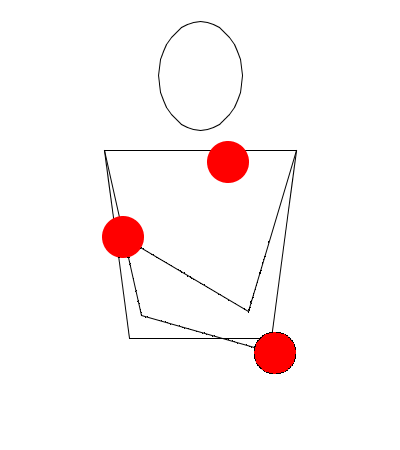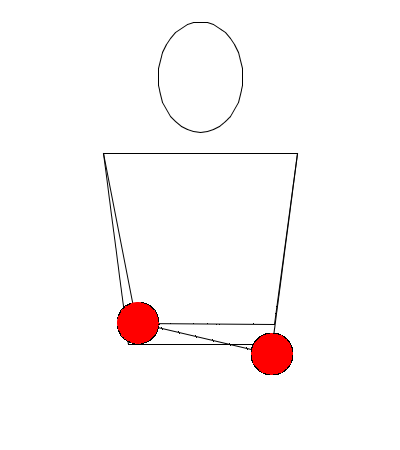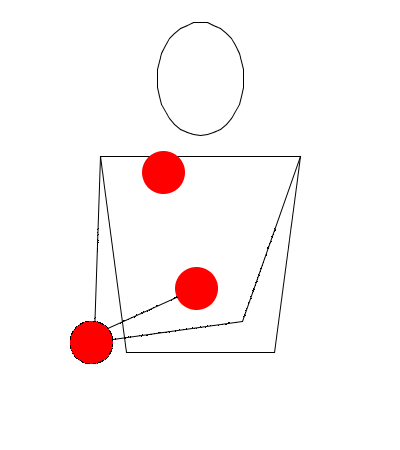Dancey's Devilment
Other Tutorials:
- Siteswap: 3[51][22]2[32]
- Difficulty (1-10): 6
- Prerequisites: Rubenstein's Revenge
Colin
Eberhardt (demonstration)
Ola Löfberg (video clip)

Dancey's Devilment is a four
ball pattern "established" by Charlie Dancey. The trick was first mentioned in
Dancey's
The
Encyclopædia of Ball Juggling, in which it was vaguely described as "a
four- or a five-ball pattern with the looping features of Rubenstein's
Revenge combined with Multiplex throws of varying kinds." The exact details
of the trick weren't given, and Dancey later stated that he had no idea what
the pattern really looked like. Other jugglers began trying to recreate the
trick, and soon there were several variations of "Dancey's Devilment"
floating about. For this tutorial I have chosen the only variation where I
could find video documentation.
To begin learning Dancey's Devilment, start with two balls in
your non-dominant hand and one ball in your dominant. Cross your
non-dominant hand underneath your dominant hand, and then make a stacked
under-the-arm multiplex. The top ball should be thrown roughly twice as high
as the bottom ball, relative to the palm of your hand. As that bottom ball
reaches its peak, you are going to swing your dominant hand around and claw
catch it, uncrossing your arms as you do so. As the top multiplexed ball
descends, you are going to make a roughly vertical throw from the center of
your body (ideally it should be angled slightly toward your dominant side).
You will then catch the top multiplexed ball in your dominant hand and catch
the other ball with your non-dominant hand.
As shown, practice this on both sides. To add in the fourth
ball, you are going to start with two balls in each hand. Cross your
dominant hand over your non-dominant, but shift both hands toward the
dominant side of your body. Make a vertical throw from your dominant hand
and then, as the ball begins to descend, make the same stacked under-the-arm
multiplex done in the previous step from your non-dominant hand. This will
clear space for your non-dominant hand to catch the ball thrown from your
dominant hand. As the bottom multiplexed ball reaches its peak, you are
going to again swing your dominant hand around and claw catch it, uncrossing
your arms in the process. However, unlike in the previous step, you are
going to continue circling your non-dominant hand (which is holding a ball)
up and around as your dominant hand makes its center vertical throw. Your
non-dominant hand should cross back over your dominant hand just as your
dominant hand is catching the top multiplexed ball. Your non-dominant hand
will then circle underneath the center vertical ball, releasing the ball its
holding and claw catching the center ball (as if juggling Rubenstein's
Revenge). The ball it threw will then be caught by your dominant hand.
Once again, practice this on both sides. This sequence
represents one cycle of Dancey's Devilment. To connect both sides of the
pattern, you are simply going to make another stacked under-the-arm
multiplex, this time with your dominant hand (assuming you made the previous
multiplex with your non-dominant hand). You will then repeat the cycle on
the opposite side of your body. Assuming you are already fairly comfortable
with multiplexes and Rubenstein's Revenge, Dancey's Devilment will not be
that difficult to learn.
